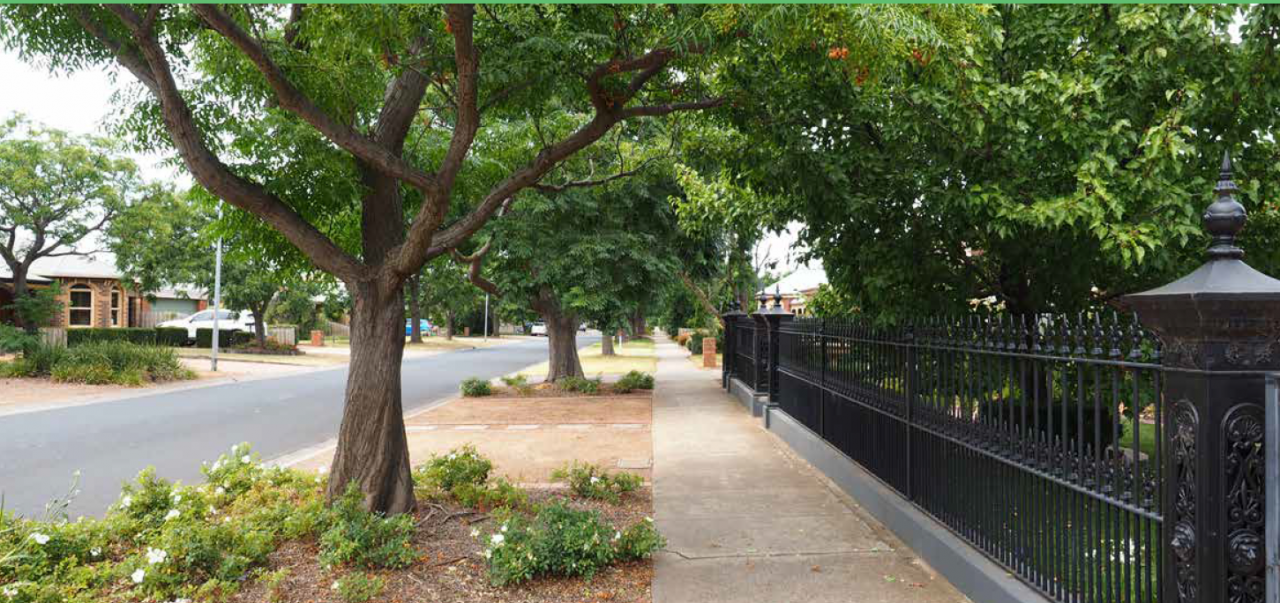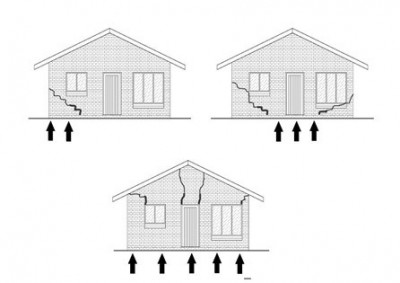Trees play an essential role in making Wyndham an attractive, healthy and sustainable place. They provide significant benefits by improving air quality, providing shade, reducing stormwater runoff, and improving the streetscape.
Wyndham soil profile
Many Wyndham homes are situated on what is termed reactive clay soils. These soils are subject to expansion and contraction depending on seasonal weather and site conditions (swelling when wet and shrinking when dry).
Structural damage can result from movement in clay soils caused by varying moisture conditions around the perimeter of homes
Causes of movement in buildings
Movement can occur if buildings are not engineered correctly.
Roots from large trees can sometimes damage buildings, but these are just one of many reasons a building may start to show signs of movement.
Factors that can contribute to building movement can also include settlement due to construction, soil saturation, seasonal swelling and shrinkage and shear failure.
Merely attributing damage, or the potential for future damage occurring to tree root growth is often an over simplification of the issue.
Future proofing your home
The fundamental cause of movement in buildings is usually related to problems associated with the foundational soil combined with unsuitable footings for the conditions.
It is important for the homeowner and/or builder to identify the soil type to ascertain the measures that are required to ensure problems in the foundational soil are prevented.
It is often far more cost effective to engineer appropriate footing solutions during the design phase of construction, than having to retrofit solutions when building movement occurs.
How can I prevent tree root damage to my building?
The best way to prevent root damage to new buildings is to ensure they are built to the relevant industry code. If you are building close to either existing, or planned trees, the standard design and construction methods may need to be altered to account for this.
It is best to engage the services of a suitably qualified structural engineer when deciding what type of footing is required for your situation.
Properties may also be affected by leaking or disconnected stormwater pipes that allow excess water to flood the soil close to a building. This can cause subsidence and/or encourage tree roots to grow in that area. Fixing these types of problems can prevent future damage occurring.
How can I find out the type of tree that is planted, or scheduled to be planted, outside of my property?
The approved landscaping plan for a subdivision contains the type and locations of trees that will be planted into the street scape
If designing a footing in a new subdivision, you are encouraged to contact Council on 1300 023 411 or at subdivlud@wyndham.vic.gov.au to request a copy of the approved landscaping plans for your subdivision.
I am constructing a property in an established part of Wyndham?
You are encouraged to contact council on 1300 023 411 or at TreePlanning@wyndham.vic.gov.au to find out the type of tree that is planted on the nature strip adjacent to your property.
I am designing my property and the street trees haven’t been planted yet, what should I do?
It is best to assume that a tree is scheduled to be planted outside of your property.
Please contact council on 1300 023 411 at subdivlud@wyndham.vic.gov.au to request a copy of the approved landscaping plans for your subdivision.
Can I request the removal of a street tree to allow for a standard footing to be installed?
Street trees will not be removed from approved landscaping plans to facilitate an economy footing design.
It is the responsibility of the homeowner and/or builder to ensure the building is engineered in accordance with the relevant industry code.

